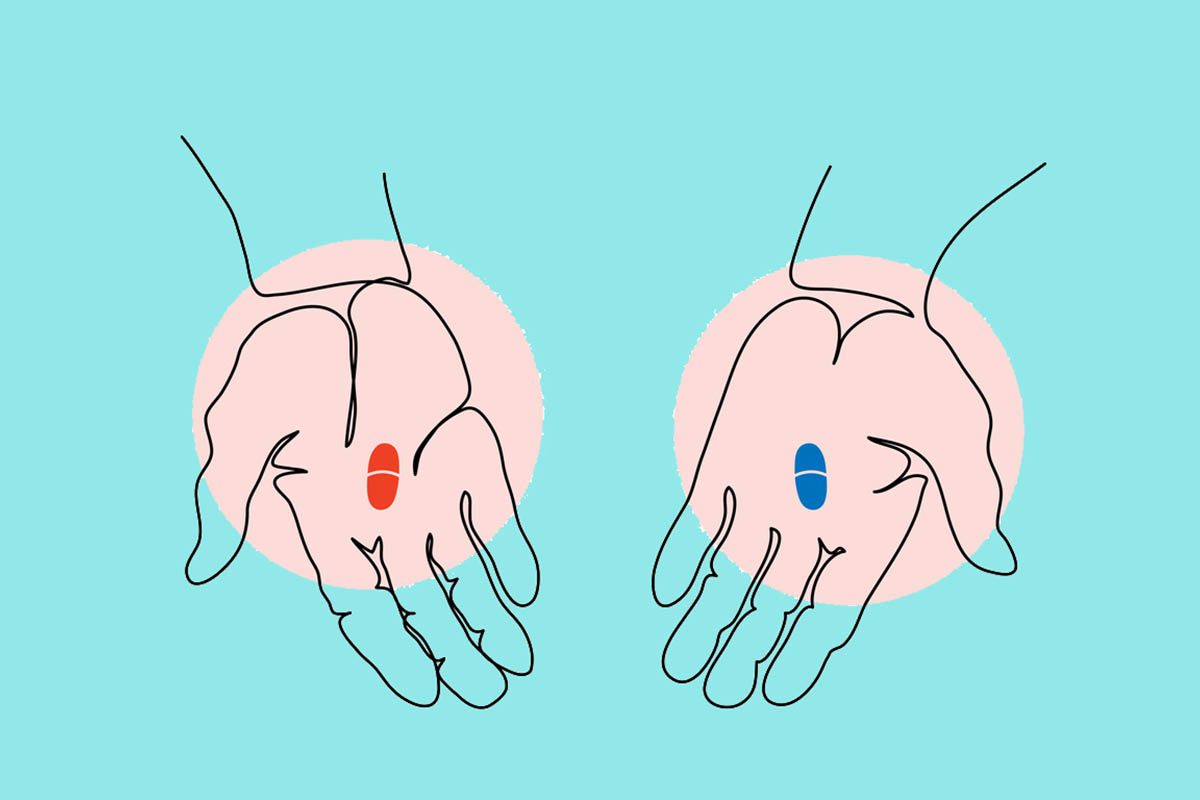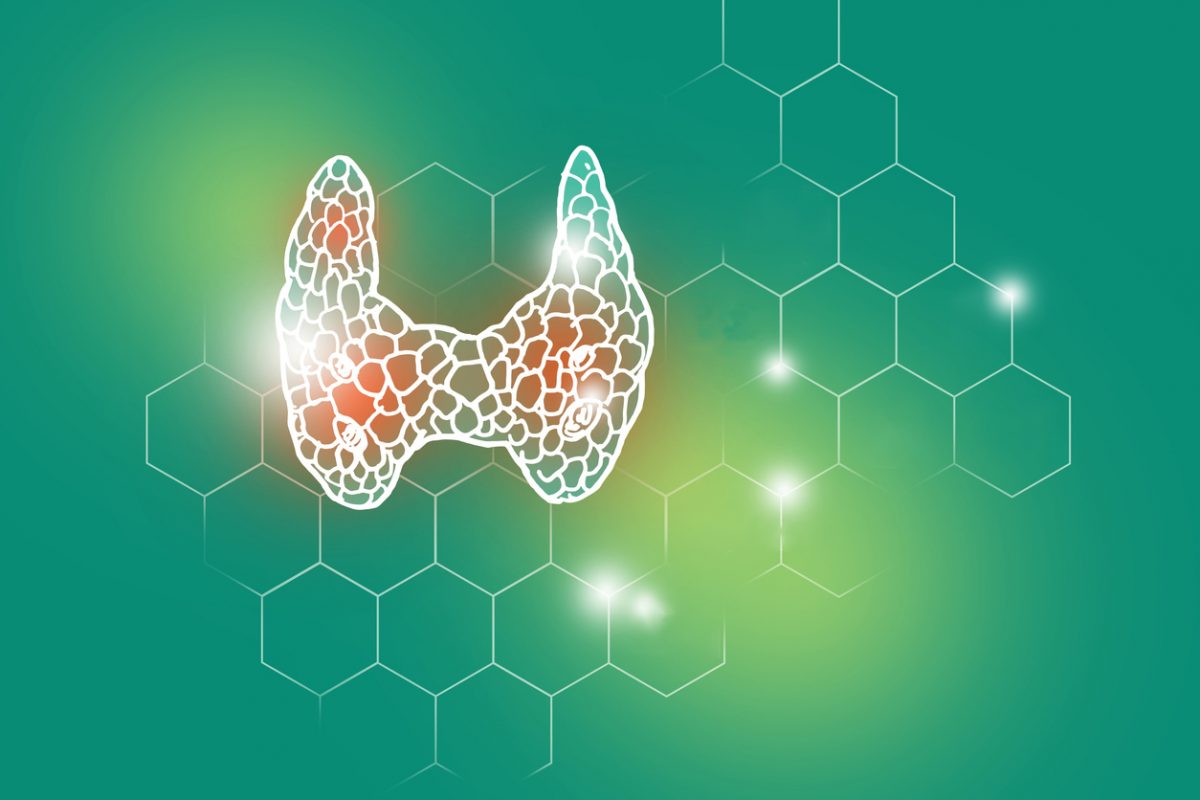Do Glutamatergic Agents Represent a New Class of Antidepressant Drugs? Part 2
As reviewed in part 1, mounting evidence suggests that changes in glutamate neurotransmission are associated with both the pathophysiology and treatment of major depressive disorder (MDD). The complexity of the glutamatergic neurotransmitter system provides many potential pharmacologic targets that could be exploited in the development of novel antidepressant and mood-stabilizing medications. The preceding section provided a brief overview of drugs targeting glutamate release and uptake as well as the metabotropic glutamate receptors. This section will focus on recent work on the ionotropic N-methyl-d-aspartate (NMDA) and α-amino-3-hydroxy-5-methyl-4-isoxazole propionic acid (AMPA) receptors.
NMDA Receptor
NMDA receptors are ion channels that exist primarily as a complex composed of NR1, NR2, and NR3 subunits. There are multiple splice variants of each of the subunits, resulting in many different versions of the receptor with slightly varied properties. In addition to glutamate, glycine serves as a coagonist for the NMDA receptor, and binding of both molecules is necessary to open the receptor’s ion channel. Of further potential pharmacologic interest, magnesium and zinc concentrations also modulate NMDA receptor function. NMDA receptors are present throughout the CNS, serve complex roles in the regulation of brain function, and are known to promote both neuronal survival and cell death.1,2
Studies reporting antidepressant-like activities associated with the NMDA receptor-active drug cycloserine date back to the late 1950s3 (prior even to knowledge that glutamate was a neurotransmitter), and the glutamatergic system has been considered by some as a potential target for antidepressant drug development for several years.4 However, the recent interest in the receptor as a target in relationship to MDD was markedly spurred by a somewhat serendipitous finding from Berman et al5 showing that ketamine, a noncompetitive NMDA antagonist, dramatically improved depressive symptoms in a group of 7 subjects with MDD. The study, originally designed to examine the acute effects of a subanesthetic dose of ketamine on cognitive function, unexpectedly yielded data showing the patients’ depression severity decreased markedly within hours after receiving a single 40-minute infusion of the drug. This finding of a rapid and sustained (at least for several days) improvement in depression symptoms following a single dose of ketamine was later replicated by Zarate et al6 in a study involving 17 MDD subjects. In this study, 71% of the subjects showed > 50% reduction in depression severity as measured by the Montgomery-Asberg Depression Rating Scale, and 29% of the subjects met criteria for remission within 24 hours of dosing. Several recently published open-label studies and case reports further bolster the initial observations of ketamine’s acute antidepressant-like properties (see reference 7, for example). In addition to the clinical studies, rodent studies, some dating back nearly 35 years, demonstrate that NMDA antagonists possess antidepressant-like properties.8-10
The potential ability to pharmacologically target specific subunits of the NMDA receptor provides some promise that the antidepressant properties of ketamine may be captured while avoiding its major effects on perception and cognition. Along these lines, a recently published study by Preskorn et al11 using an NMDA NR2B-selective drug (CP-101606) suggests this approach may be fruitful.11 However, studies with memantine, another low-to-moderate affinity noncompetitive NMDA receptor antagonist (but with noted pharmacologic differences from ketamine12), appear less conclusive. Zarate et al13 failed to show any antidepressant advantage of memantine at doses up to 20 mg/d compared to placebo in a double-blind randomized controlled trial of 32 subjects over a period of 8 weeks. A second study of 80 alcohol-dependent outpatients with MDD did suggest that memantine had effects equivalent to escitalopram; however, no placebo control was included in the design.14
There has also been increased interest surrounding the potential utility of drugs that modulate the effects of glycine on NMDA receptor activation in the treatment of various psychiatric disorders. d-Cycloserine, a glycine partial agonist, has been shown in several rodent studies and small clinical trials to facilitate fear extinction.15 However, despite the early reports of cycloserine’s antidepressant-like activities previously mentioned,3 the only recent study examining the antidepressant effects of d-cycloserine in a small sample of depressed subjects did not show a significant effect.16 There are many potential factors limiting the conclusions from this study, including the fact that d-cycloserine was not augmented with a behavioral therapy as in the studies using d-cycloserine to treat anxiety disorders.17 In addition to d-cycloserine, there is also a growing interest in using glycine transport inhibitors to treat neuropsychiatric disorders18,19; however, there are no reports of studies using glycine transport inhibitors in humans with MDD to date.
AMPA and Kainate Receptors
Similar to the NMDA receptor, the AMPA and kainate (KA) receptors are composed of a complex of subunits, affording the opportunity for pharmacologic specificity by targeting individual subunits. Modification of synaptic AMPA receptors is now recognized to be a critically important mechanism for regulating various forms of synaptic plasticity,20 and trafficking of AMPA receptors is believed to underlie several experience-driven phenomena ranging from neuronal circuit formation to the modification of behavior.21 A series of studies suggesting the receptors are altered in animal models of mood disorders and in some depressed individuals22-24 have helped the AMPA and KA receptors gain attention in the area of mood disorder research. Additional studies showing that AMPA receptor function is modified by many classes of existing mood stabilizers and antidepressant agents suggest the receptor may be involved in a common mechanism of action for the drugs.25 A recent rodent study illustrating the ability of an AMPA antagonist to block the antidepressant properties of 2 NMDA antagonist drugs suggests that in fact the increased activation of the AMPA receptors may be driving the antidepressant-like response to the NMDA antagonists.26 There is a growing interest in targeting AMPA receptors for both cognitive enhancement and the treatment of neuropsychiatric disorders. A new class of compounds referred to as AMPA potentiators or ampakines, which indirectly modulate the receptors through effects on receptor desensitization and deactivation, is currently being evaluated for a variety of indications ranging from cognition to Parkinson’s disease. Preclinical studies suggest the class of agents possesses antidepressant properties.22 Although a single clinical trial has been initiated for the treatment of MDD (www.clinicaltrials.gov, NCT00113022), no results have been reported to date.
Summary
Both preclinical and early-phase clinical studies suggest that drugs targeting the ionotropic glutamate receptors possess potent antidepressant properties. The seeming effectiveness in previously treatment-resistant patients, the novelty of the mechanism of action, and the rapid antidepressant response associated with the NMDA antagonist drugs have stimulated great interest both at academic centers and within the pharmaceutical industry. However, it is important to acknowledge the limitations of clinical studies reported to date in this area. None of the studies have truly been conducted in a double-blind fashion because the acute effects of the ketamine and even CP-101606 on cognition and perception were discernable by both the subjects and the treaters when compared to a saline placebo. In addition, the studies provide no information on the longer-term effectiveness and safety of the NMDA receptor antagonists in treating depression. This is especially important considering that under certain conditions NMDA receptor antagonists themselves can be neurodestructive.27 According to clinicaltrials.gov listings, there are 8 ongoing clinical trials examining the antidepressant and mood-stabilizing efficacy of NMDA antagonists, in addition to several others that were recently completed. Undoubtedly, the results of these studies will provide more information on this class of drugs in the near future.
Author affiliation: Department of Psychiatry, Yale University, New Haven, Connecticut. Financial disclosure: Dr Sanacora has received consulting fees from AstraZeneca, Bristol-Myers Squibb, Evotec, Eli Lilly, Johnson & Johnson, Roche, Ruxton, and Sepracor; has received additional grant support from AstraZeneca, Bristol-Myers Squibb, Merck, Roche, Ruxton, and Sepracor; has received fees for expert witness testimony from Shook, Hardy and Bacon; and is a co-inventor on a filed patent application by Yale University (PCTWO06108055A1) concerning the use of glutamate modulating drugs as antidepressants. Funding/support: This work was supported by funding provided through National Institute of Mental Health grant K02 MH076222-03. Corresponding author: Gerard Sanacora, MD, PhD, Yale University, 34 Park St, New Haven, CT 06519 ([email protected]).
References
1. Hardingham GE, Fukunaga Y, Bading H. Extrasynaptic NMDARs oppose synaptic NMDARs by triggering CREB shut-off and cell death pathways. Nat Neurosci. 2002;5(5):405-414. PubMed
2. Ivanov A, Pellegrino C, Rama S, et al. Opposing role of synaptic and extrasynaptic NMDA receptors in regulation of the extracellular signal-regulated kinases (ERK) activity in cultured rat hippocampal neurons. J Physiol. 2006;572(pt 3):789-798. PubMed
3. Crane GE. Cycloserine as an antidepressant agent. Am J Psychiatry. 1959;115(11):1025-1026. PubMed
4. Skolnick P. Antidepressants for the new millennium. Eur J Pharmacol. 1999;375(1-3):31-40. PubMed doi:10.1016/S0014-2999(99)00330-1
5. Berman RM, Cappiello A, Anand A, et al. Antidepressant effects of ketamine in depressed patients. Biol Psychiatry. 2000;47(4):351-354. PubMed doi:10.1016/S0006-3223(99)00230-9
6. Zarate CA Jr, Singh JB, Carlson PJ, et al. A randomized trial of an N-methyl-D-aspartate antagonist in treatment-resistant major depression. Arch Gen Psychiatry. 2006;63(8):856-864. PubMed doi:10.1001/archpsyc.63.8.856
7. Mathew SJ, Murrough JW, Aan Het Rot M, et al. Riluzole for relapse prevention following intravenous ketamine in treatment-resistant depression: a pilot randomized, placebo-controlled continuation trial. Int J Neuropsychopharmacol. 2009;1-12. PubMed doi:10.1017/S1461145709000169
8. Garcia LS, Comim CM, Valvassori SS, et al. Ketamine treatment reverses behavioral and physiological alterations induced by chronic mild stress in rats. Prog Neuropsychopharmacol Biol Psychiatry. 2009;33(3):450-455. PubMed doi:10.1016/j.pnpbp.2009.01.004
9. Yilmaz A, Schulz D, Aksoy A, et al. Prolonged effect of an anesthetic dose of ketamine on behavioral despair. Pharmacol Biochem Behav. 2002;71(1-2):341-344. PubMed doi:10.1016/S0091-3057(01)00693-1
10. Sofia RD, Harakal JJ. Evaluation of ketamine HCl for anti-depressant activity. Arch Int Pharmacodyn Ther. 1975;214(1):68-74. PubMed
11. Preskorn SH, Baker B, Kolluri S, et al. An innovative design to establish proof of concept of the antidepressant effects of the NR2B subunit selective N-methyl-D-aspartate antagonist, CP-101,606, in patients with treatment-refractory major depressive disorder. J Clin Psychopharmacol. 2009;29(4):411-412. PubMed doi:10.1097/JCP.0b013e3181afda04
12. Kotermanski SE, Wood JT, Johnson JW. Memantine binding to a superficial site on NMDA receptors contributes to partial trapping. J Physiol. 2009;587(pt 19):4589-4604. PubMed doi:10.1113/jphysiol.2009.176297
13. Zarate CA Jr, Singh JB, Quiroz JA, et al. A double-blind, placebo-controlled study of memantine in the treatment of major depression. Am J Psychiatry. 2006;163:153-155. PubMed doi:10.1176/appi.ajp.163.1.153
14. Muhonen LH, Lönnqvist J, Juva K, et al. Double-blind, randomized comparison of memantine and escitalopram for the treatment of major depressive disorder comorbid with alcohol dependence. J Clin Psychiatry. 2008;69(3):392-399. PubMed doi:10.4088/JCP.v69n0308
15. Davis M, Ressler K, Rothbaum BO, et al. Effects of d-cycloserine on extinction: translation from preclinical to clinical work. Biol Psychiatry. 2006;60(4):369-375. PubMed doi:10.1016/j.biopsych.2006.03.084
16. Heresco-Levy U, Javitt DC, Gelfin Y, et al. Controlled trial of d-cycloserine adjuvant therapy for treatment-resistant major depressive disorder. J Affect Disord. 2006;93(1-3):239-243. PubMed doi:10.1016/j.jad.2006.03.004
17. Norberg MM, Krystal JH, Tolin DF. A meta-analysis of D-cycloserine and the facilitation of fear extinction and exposure therapy. Biol Psychiatry. 2008;63(12):1118-1126. PubMed doi:10.1016/j.biopsych.2008.01.012
18. Morita K, Motoyama N, Kitayama T, et al. Antinociceptive effects of glycine transporter inhibitors in neuropathic pain models in mice. Nippon Yakurigaku Zasshi. 2007;130(6):458-463. PubMed
19. Javitt DC. Glycine transport inhibitors for the treatment of schizophrenia: symptom and disease modification. Curr Opin Drug Discov Devel. 2009;12(4):468-478. PubMed
20. Malinow R, Malenka RC. AMPA receptor trafficking and synaptic plasticity. Annu Rev Neurosci. 2002;25(1):103-126. PubMed doi:10.1146/annurev.neuro.25.112701.142758
21. Kessels HW, Malinow R. Synaptic AMPA receptor plasticity and behavior. Neuron. 2009;61(3):340-350. PubMed doi:10.1016/j.neuron.2009.01.015
22. Bleakman D, Alt A, Witkin JM. AMPA receptors in the therapeutic management of depression. CNS Neurol Disord Drug Targets. 2007;6(2):117-126. PubMed doi:10.2174/187152707780363258
23. Paddock S, Laje G, Charney D, et al. Association of GRIK4 with outcome of antidepressant treatment in the STAR*D cohort. Am J Psychiatry. 2007;164(8):1181-1188. PubMed doi:10.1176/appi.ajp.2007.06111790
24. Laje G, Paddock S, Manji H, et al. Genetic markers of suicidal ideation emerging during citalopram treatment of major depression. Am J Psychiatry. 2007;164(10):1530-1538. PubMed doi:10.1176/appi.ajp.2007.06122018
25. Du J, Suzuki K, Wei Y, et al. The anticonvulsants lamotrigine, riluzole, and valproate differentially regulate AMPA receptor membrane localization: relationship to clinical effects in mood disorders. Neuropsychopharmacology. 2007;32(4):793-802. PubMed doi:10.1038/sj.npp.1301178
26. Maeng S, Zarate CA Jr, Du J, et al. Cellular mechanisms underlying the antidepressant effects of ketamine: role of alpha-amino-3-hydroxy-5-methylisoxazole-4-propionic acid receptors. Biol Psychiatry. 2008;63(4):349-352. PubMed doi:10.1016/j.biopsych.2007.05.028
27. Olney JW. Neurotoxicity of NMDA receptor antagonists: an overview. Psychopharmacol Bull. 1994;30(4):533-540. PubMed
doi:10.4088/JCP.09ac05757blu
© Copyright 2009 Physicians Postgraduate Press, Inc.
ASCP Corner offerings are not peer reviewed by the Journal but are peer reviewed by the ASCP. The information contained herein represents the opinion of the author.
Visit the Society Web site at www.ascpp.org





